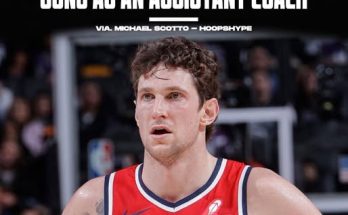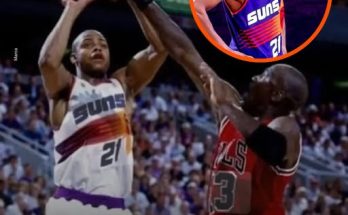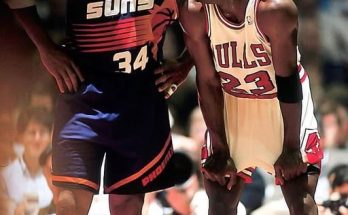The Arizona Cardinals just received an unexpected boost to their 2025 NFL campaign—not from a trade, a free-agent signing, or even a standout practice performance, but from a key development in another team’s camp. One of their fiercest division rivals has suffered a major blow to its offensive line, an event that could have ripple effects across the entire NFC West. While football is a team sport dependent on all three phases—offense, defense, and special teams—any head coach or seasoned veteran will tell you that everything begins in the trenches. When the offensive line falters, so does the rest of the unit, and unfortunately for the Cardinals’ rival, that’s now a very real concern.
While the exact details of the injury are still being confirmed, the early reports are grim. A top-tier offensive lineman who has long anchored the line—one of the few constants amid years of personnel shifts—went down in practice with what sources describe as a serious lower-body injury. Early tests have indicated significant damage, and the player is now expected to miss the majority, if not all, of the upcoming season. For a rival that has invested heavily in protecting their quarterback and building a ground game that can control the clock, this is a potentially season-altering loss.
From Arizona’s perspective, this injury could not have come at a more opportunistic time. The Cardinals are entering the season with a renewed sense of optimism. After a rebuilding year that allowed them to evaluate young talent and reset the culture under new leadership, 2025 is all about competition and climbing the NFC West ladder. With Kyler Murray healthy, a revamped receiving corps, and a defense that’s starting to gel under a creative scheme, there’s real belief in the building that this team can make noise. But in a division where margins are razor-thin and every game feels like a playoff battle, small advantages can quickly become season-defining. Losing a key offensive lineman doesn’t just affect pass protection—it impacts run blocking, continuity, audibles at the line, and ultimately, the rhythm and confidence of the entire offense.
For the Cardinals, this means that one of their toughest games on the schedule just became more winnable. The defensive line, led by a resurgent pass rush and anchored by young studs up front, now has a tangible mismatch to exploit. Expect defensive coordinator Nick Rallis to circle that matchup on the calendar, knowing full well that this may be the week to bring pressure from every angle and test the depth of an already vulnerable opponent. If there was ever a time for a breakout game from a young edge rusher or an opportunistic strip-sack to swing momentum, this is it.
Of course, football fans and analysts alike understand that teams rarely crumble due to one injury. Depth, coaching, and scheme adjustments can compensate, at least temporarily. But this isn’t just any player—it’s someone with Pro Bowl talent, years of experience, and deep command of the protection calls. Losing him means more than just a downgrade in talent; it’s a loss in leadership, communication, and trust, especially for a quarterback who’s already under pressure to perform. For a team with playoff aspirations, this could be a moment where confidence wavers and internal friction starts to surface.
On the other hand, the Cardinals now have an opportunity to reframe their own narrative. They are no longer just a rebuilding franchise with promise—they’re a legitimate threat in a division now weakened by attrition. This is their chance to turn the corner, stack divisional wins, and start climbing the standings with momentum. The NFL season is a long and grueling marathon, and fortunes can shift on a single snap. In this case, the injury to a rival lineman may serve as the domino that changes the shape of the NFC West hierarchy.
The psychological impact cannot be overstated either. Teams watch film, read reports, and talk internally about injuries around the league. When one team suffers a major blow, others smell blood in the water. Confidence rises. Game plans become more aggressive. Pass rushers get that extra burst knowing they’re facing a backup or a newly shuffled line. And when that mindset spreads across an entire defense, it creates chaos for opposing offenses. The Cardinals have to capitalize on this energy. They have to prepare like a contender and execute like one, taking advantage of every weakened unit they face.
Meanwhile, the rival franchise now enters damage-control mode. Their coaching staff must assess replacements—whether internal backups who lack starting experience or potential free-agent signings who have been out of football for months. Either option comes with its own set of challenges. Backups may be physically up to the task but mentally unprepared for complex blitz schemes. Free agents may have name recognition but lack cohesion with the unit. In either scenario, the drop-off from a seasoned veteran to a makeshift solution is hard to mask, especially under the spotlight of divisional matchups.
This setback could also reshape how that team approaches the rest of the offseason. Instead of refining game plans or experimenting with new packages, valuable practice reps will now be consumed by trying to get replacements up to speed. Coaches will be forced to simplify protection schemes, reducing the offensive playbook’s effectiveness. Quarterbacks may be asked to get rid of the ball quicker, disrupting timing with receivers. In short, one injury can cause a cascade of adjustments that ripple through every aspect of preparation.
Cardinals fans have been waiting patiently for a moment like this—where things start to break their way and the light at the end of the tunnel grows brighter. While no one ever roots for injury, the realities of professional football mean that roster attrition is part of the game, and the best teams find a way to take advantage when opportunity presents itself. Arizona has often been on the wrong side of injury reports in recent years, watching promising seasons unravel due to key players being sidelined. But now, the pendulum may finally be swinging in their favor.
The upcoming schedule takes on new meaning. Games against this rival, which may have looked like uphill battles a few weeks ago, now feel much more balanced—or even slanted in Arizona’s favor. Coaches will adjust their approach. Players will smell opportunity. And if they can seize it, they may find themselves in the thick of the playoff race by midseason.
For Arizona, this isn’t just about a rival’s misfortune. It’s about recognizing a shift in the competitive landscape and responding with urgency and focus. It’s about capitalizing on chaos, turning every small edge into a decisive advantage. It’s about believing that this could be the year things finally start to turn around. And as the Cardinals continue to prepare for training camp, install their systems, and build chemistry, they now do so with a little more confidence—and one less obstacle in their path to success.
In a division that features high-powered offenses and Super Bowl-caliber rosters, even a minor chink in the armor can have major implications. The Cardinals’ job is to make sure this setback for their rival becomes a season-defining advantage for themselves. The loss of a star offensive lineman might not make headlines the way a quarterback injury would, but in the NFL, games are won and lost at the line of scrimmage. Arizona has a golden opportunity to tilt the trenches in their favor and reshape the conversation around their future. All they need to do now is take the field and prove they’re ready to strike.



